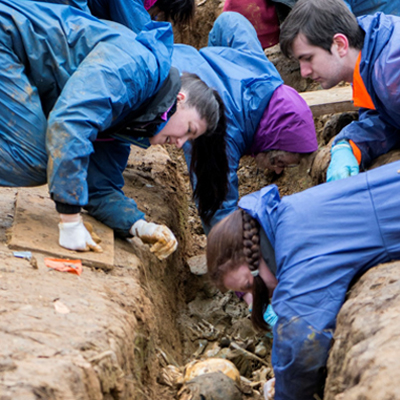Researchers at Cranfield University are using blowflies and other insects to develop a database which will provide a complementary method of estimating time since death in forensic investigations.
The database – thought to be the first of its kind in the world – uses chemical profiles from the waxy coating on the outside of insects and will provide a library for forensic entomologists to refer to when investigating cases.
Forensic pathologists can give an accurate post-mortem interval estimate up to 72 hours after death. After this, forensic entomologists are often called to crime scenes and use the age of insects that inhabit decomposing remains to give a more accurate indication of how long the person has been deceased.
Dr Hannah Moore, Lecturer at Cranfield Forensic Institute (CFI), said: “Knowing how long someone has been dead, particularly in the case of murder, is vital in proving the innocence or guilt of suspects. Insects can also tell us if the person consumed drugs, if their body was moved or whether it has been frozen – they’re the most reliable witnesses in many cases.”
The most established way to estimate the age of insects is to use their length, as well as other variables, but these are highly influenced by the temperature of an environment.
The database at Cranfield – which uses cuticular hydrocarbons (CHC), a class of compounds found in the epicuticular layer which covers insects – will offer a chemical profile reference.
“These compounds act like a fingerprint and are species-specific. This provides a complementary method of identifying and ageing insects which has proved extremely accurate. The robustness of this method may be useful in court cases for presenting reliable and clear-cut evidence in the future,” said Dr Moore.
The project will also examine geographical differences within the same species across different climates to model the stability of the CHC samples, which are taken from the larvae of the insects.
It is estimated that the database will take five years to complete and will include all forensically important species, with a focus on blowflies (Calliphoridae).
Dr Martin Hall, forensic entomologist and head of division at the Natural History Museum, London, said: “Dr Moore is one of the leading scientists studying the application of chemical ecology and chemical taxonomy techniques to forensic entomology. Her work has demonstrated the potential to reveal information from insect evidence that was previously unobtainable, such as the age of adult flies or the species identity of fragments of a puparium.”
Dr Moore’s research applies analytical chemistry to the field of forensic entomology and she collaborates with numerous universities throughout the UK as well as Europe and the US, along with the Natural History Museum and Alecto Forensics.





